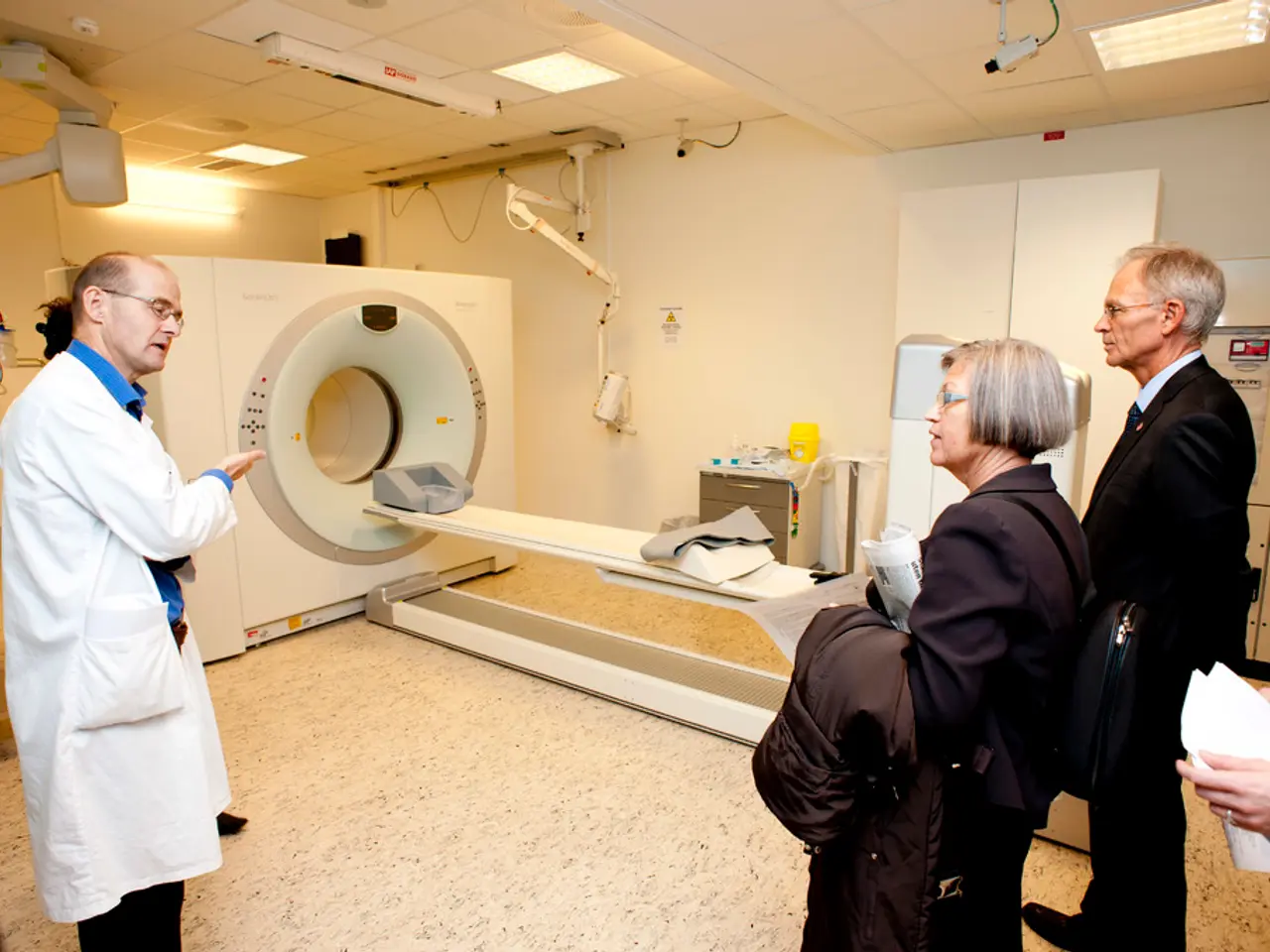New measure in Belarus: Unified approach for a Single Disease
Belarus is planning to introduce new methods for lung cancer screening, moving away from traditional fluorography and towards more advanced imaging techniques like low-dose computed tomography (LDCT) scans. This change aims to improve early detection of lung cancer, a leading cause of death among men in the country.
Viktor Konдратovich, the chief physician of the Minsk City Clinical Oncological Center, announced these plans, citing the limitations of classic fluorography in lung cancer diagnosis. Traditional fluorography, which uses chest X-rays, has a lower sensitivity for detecting small or early-stage lung tumors.
One of the proposed methods is LDCT screening, which is designed to detect lung nodules at an early stage, significantly improving early diagnosis compared to fluorography. The detailed cross-sectional images provided by LDCT can better identify small nodules or tumors in the lungs.
Other methods under consideration include the integration of advanced imaging technologies and AI-based tools to enhance diagnostic accuracy. There are also plans to adopt biomarker-based tests or liquid biopsies in the future to complement imaging, although these are more experimental and currently seen in leading research centers rather than widely deployed screening programs.
The shift from traditional fluorography offers several advantages:
| Aspect | Traditional Fluorography | Low-Dose CT Screening | |-------------------------|------------------------------------|--------------------------------------| | Imaging Type | 2D chest X-ray | 3D cross-sectional imaging | | Sensitivity for early cancer | Low | High | | Radiation dose | Moderate | Low (optimized for screening) | | Detection of small nodules | Poor | Effective | | Use of AI/enhanced analysis | Rare | Emerging integration | | Cost & infrastructure | Low, widely available | Higher, requires CT scanners |
While no explicit statement has been made about the exact method Belarus is adopting, it seems likely that the country is considering LDCT-based lung cancer screening programs to replace or supplement traditional fluorography. This aligns with recommendations from the World Health Organization and the International Atomic Energy Agency to improve early detection and reduce lung cancer mortality.
It's important to note that oncarkers, auxiliary elements of diagnosis, should only be checked upon a doctor's prescription. For prostate cancer, prostate-specific antigen should be checked if suspected, while CA-125 is relevant for ovarian cancer. For the thyroid gland, thyroglobulin and calcitonin are reliable oncarkers.
Traditionally, smokers, those working in hazardous industries, and heavy drinkers are at high risk for lung cancer. However, anyone experiencing symptoms such as a persistent cough, chest pain, or unexplained weight loss should consult a doctor.
The screening experiment will start in military medical units next year, marking a significant step towards early and accurate detection of lung cancer in Belarus.
Read also:
- Overweight women undergoing IVF have a 47% higher chance of conceiving naturally post-weight loss
- What temperatures may make walking your canine companion uncomfortable?
- Eye treatments for Drusen: Insights and expansions
- Presidential Candidate Uses Controversial Tactics to Gain Vote, Prompting Outcry From Opponents and Politicians Alike






